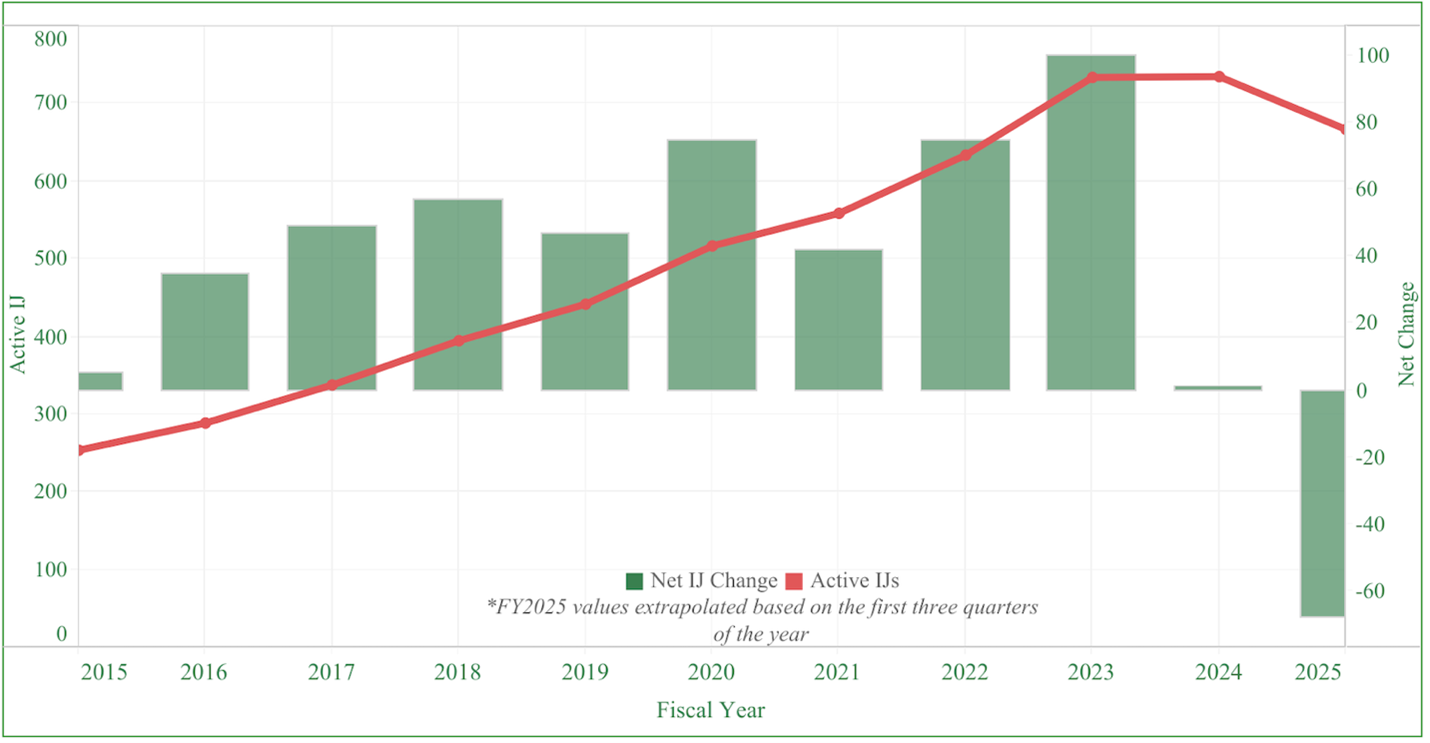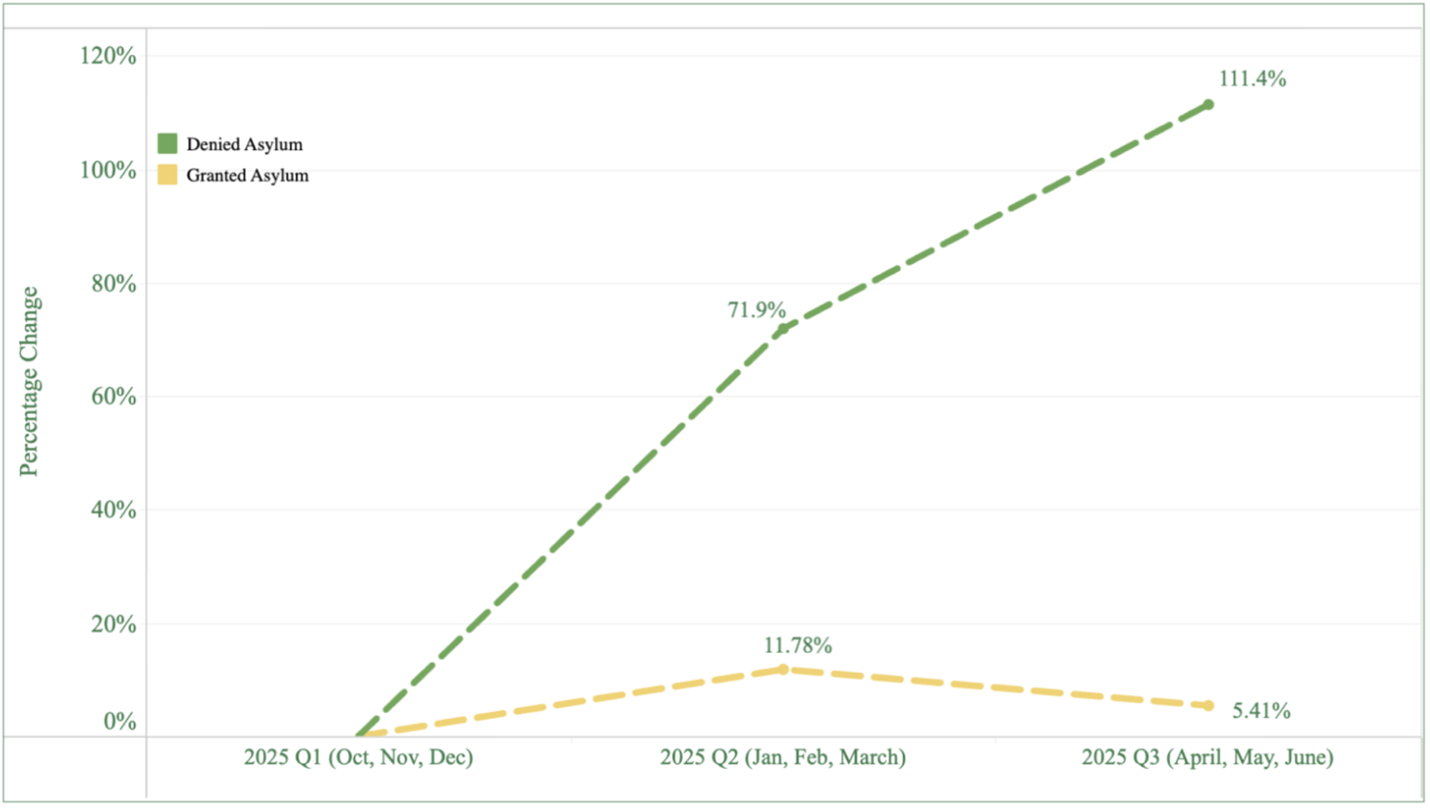Immigration Courts Caught in the Balance:
Escalating Asylum Denials and a Dwindling Judges Corps
By Savannah Estridge, Data Scientist, Acacia-REDA Team
Published: October 1, 2025
Immigration judges are appointed by the U.S. Attorney General to preside over formal court proceedings in the 71 immigration courts across the United States. These judges are civil servants considered part of the executive branch within the Department of Justice and work under the direction of the Attorney General. They preside over removal proceedings to determine if a non-citizen will be ordered removed. In addition, they preside over cases for applications for relief from removal, such as asylum, withholding of removal, and protection under the Violence Against Women Act (VAWA) and the Convention Against Torture (CAT). These judges are tasked with ensuring due process by providing fair hearings, where they conduct an in-depth, individual analysis of each person’s case when deciding whether to deport them. According to the Transactional Records Clearing House (TRAC), in FY2024, 735 immigration judges completed over 900,000 cases.
Since the beginning of the second Trump administration, more than 100 immigration judges (approximately 15%) have been fired, transferred, or taken the Department of Government Efficiency’s resignation offer, according to the Immigration Judge Union (read more here). This loss of judges occurred amid a backlog of over three million cases within the immigration court system. Meanwhile, judges have raised serious concerns about pressure from the administration to expedite asylum cases. These firings lead to already-strained judges being required to complete even heavier caseloads while attempting to reduce the backlog, thereby risking due process if a judge does not have sufficient time to thoroughly analyze the merits of each case.
Following a Steady Period of Growth,
the Number of Immigration Judges Has Declined

The immigration judge corps has grown steadily for several years, with 253 judges on board in 2015, rising to a high of 735 in FY 2024. But this period of uninterrupted growth came to an end in 2025.
As of March 2025, EOIR reported a sudden decline in the total number of onboard judges, with 34 immigration judges having been off-boarded. This marked the first instance of a decrease in the total number of judges on board within this ten-year span. As of the end of Q3 2025, EOIR reported that the official count of judges on board was 685. In the above graph, values for 2025 have been extrapolated based on the first three quarters of the year.
Under Pressure From the Trump Administration to Speed up Asylum Processing,
Judges Asylum Case Denials More Than Doubled

According to the TRAC, between FY 2025 Q1 and Q3, the total number of asylum case completions rose sharply from 19,960 completions to 34,085, a 70.77% overall increase. However, this increase was not evenly reflected across the types of outcomes. Asylum denials more than doubled, increasing by 111.39%, while asylum approvals remained almost unchanged, having risen only 5.41% between Q1 and Q3. This disparity indicates that although judges are completing significantly more cases, a growing proportion are resulting in denials rather than asylum grants. This widening gap raises serious questions about whether due process is being compromised as judges face pressure to resolve more cases, making it more difficult for judges to take the necessary time to evaluate the merits of each case.